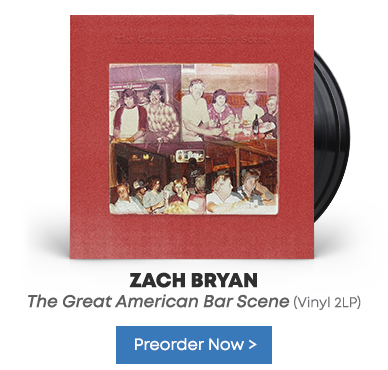Bob Dylan and Mavis Staples are set to embark on a U.S. tour together this summer – two legends sharing one stage and decades of history. "Bobby," as Staples fondly refers to Dylan, proposed to Staples years ago, and though she declined the offer, it's clear the two still share love and admiration for one another as artists. When considering Dylan's decade-spanning discography, it's near impossible to carve it down to a handful of fan favorites, biggest hits, or bootlegs. There are simply too much and too many good songs to pick and choose. That being said, every hopeful fan will come to see Dylan perform with a mental list of songs they would love to hear live. While each list surely differs, here are 10 songs that would likely appear on most wish lists.
"A Hard Rain's a-Gonna Fall" from The Freewheelin' Bob Dylan
This nearly seven-minute song paints a dark picture of a doomed world. Dylan sings of a foreboding apocalypse – most likely inspired by the threat of nuclear war at the time the song was written and recorded. "A Hard Rain's a-Gonna Fall" would become the first song of many in which Dylan touches on the topic of a crumbling environment, which he would often use as inspiration for his poetic protest songs.
"Blowin' in the Wind" from The Freewheelin' Bob Dylan
The recording of this track claims as lengthy a story as the one it tells. Before Dylan recorded it himself – he has claimed he wrote it in a cafe within 10 minutes – the New World Singers recorded it first, followed by the well-known trio Peter, Paul & Mary. The song was quickly deemed anti-war and anthemic, and though "Blowin' in the Wind" is arguably Dylan's most covered composition, there is nothing quite like the authenticity that comes through when it is performed by its own creator.
"Ballad of a Thin Man" from Highway 61 Revisited
As it turns out, the "Mr. Jones" Dylan sings of in this song is inspired by a real person, Jeffrey Owen Jones. The common belief is Jones first met Dylan while interning at Time magazine. Jones was sent to interview Dylan at Newport Folk Festival, prior to the Bard's iconic electric set. It's argued that the lyrics "Because something is happening here/But you don't know what it is/Do you, Mister Jones?" refer to how the young intern, and many others at the time, didn't understand Dylan's choice to go electric – a career-defining moment.
"Don't Think Twice, It's Alright" from The Freewheelin' Bob Dylan
Another specific person, one more widely recognized and relevant in Dylan's life, inspired this song. His former girlfriend Suze Rotolo, featured on the album's cover with Dylan, took a long trip to Italy and left Dylan alone in their New York apartment on 4th Street. While she was gone, Dylan wrote this song in addition to "Boots of Spanish Leather" and "Tomorrow Is A Long Time. All three concern Rotolo. The two stayed together while she was away (the photoshoot for the album cover took place when she returned) but the couple later broke up as Dylan became an increasingly iconic figure.
"Gonna Change My Way of Thinkin'" from Gotta Serve Somebody: The Gospel Songs of Bob Dylan
Many will hope Dylan and Staples will perform at least one song together, and "Gonna Change My Way Of Thinkin'" is an obvious choice. Dylan recorded the song on his record Slow Train Coming, and later rewrote and rerecorded the track with Staples on the gospel tribute album that featured covers of songs from Dylan's "born again" period. "Gonna Change My Way of Thinkin'" was nominated for a Best Pop Collaboration With Vocals Grammy and is the only track Dylan sings on the tribute record.
"Hurricane" from Desire
Dylan, always one for justice, wrote "Hurricane" in defense of boxer Rubin "Hurricane" Carter. The latter was tried and convicted for homicides even as it was later revealed the trial was – as Dylan argued – tainted. Dylan met with Carter while the boxer remained in prison and wrote "Hurricane" as a result of their conversation. The song tells the story of the alleged acts of racism and profiling Carter faced, and supports Dylan's uncommon belief of Carter's innocence. Dylan played the track during every night of the Rolling Thunder Revue in 1975. He performed it one more time in January 1976 and never again since.
"I'm Not There" from Bootleg Series, Vol. 11: The Basement Tapes Complete
"I'm Not There" is often cited as a look into the middle of Dylan's creative process since it was only recorded once and never revisited. The song title lends itself to the 2007 biographical musical drama of the same name. And while the song has long been bootlegged, it wasn't officially released until its inclusion on the film's soundtrack – and, curiously, weighs in as the only Dylan recording on the soundtrack. "I'm Not There" was later released on The Basement Tapes Complete, a bootleg series that includes more than 100 songs recorded at Big Pink with the members of what would later be known as The Band.
"My Back Pages" from Another Side of Bob Dylan
Another Side of Bob Dylan features Dylan as the sole musician and allows for more emphasis on lyrical content. This song can be best understood as an acknowledgement of and possible separation from Dylan's strongly rooted political past. "But I was so much older then/I'm younger than that now" Dylan sings, potentially referring to his more open mindset and foreshadowing that both he and his music were gearing up to take a new direction.
"Positively 4th Street" from Bob Dylan's Greatest Hits
Though the song title includes the word "positively," there is far less certainty about the meaning or story Dylan relays through this tune. "Positively 4th Street" was released as a follow-up single to his hit "Like a Rolling Stone." Unlike the latter anthem, it was never included on any album other than his first compilation of greatest hits. Dylan once lived on 4th Street, a main street in Greenwich Village for the folk music scene. It's possible Dylan may have written the song simply about the underlying competitive nature of being a songwriter in Greenwich at the time his career was taking off, though nothing is positively known for certain.
"Subterranean Homesick Blues" from Bringing It All Back Home
This song is hailed as one of Dylan's first electric pieces. Dylan has long been associated with the Beats; Allen Ginsberg was a close friend of his. It's believed Jack Kerouac's novel The Subterraneans, which chronicles stories of the Beats, may have inspired the song (and its title) while the upbeat tempo and rhythm of the track were inspired by Chuck Berry's "Too Much Monkey Business." Bringing It All Back Home serves as both a departure from and return to Dylan's earlier works. He replaces his acoustic and mellow mood for a more electrifying feel, yet revisits his poetry-infused writing style that informed his handful of prior hits.
18th May 2016




































